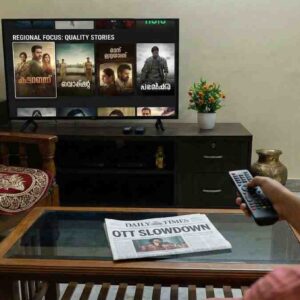A Business Model Under Pressure—and Reinvention
Mumbai – 2025
For decades, the multiplex was the crown jewel of Indian entertainment infrastructure—a symbol of urban aspiration, family weekends, and box office stardom. But post-2020, with the explosive rise of OTT platforms, Indian multiplex chains have been facing an existential dilemma:how do you sell a ₹350 ticket when audiences have ₹149 monthly subscriptions?
As content moves from the silver screen to smartphones, India’s exhibition sector—led by brands likePVR INOX,Carnival Cinemas, andMiraj—is navigating a turbulent transition.
The OTT Challenge: A Disruption With Depth
Since the pandemic, platforms likeNetflix,Amazon Prime Video,Disney+ Hotstar, andJioCinemahave expanded aggressively in India:
- Offering early-access premieres
- Investing in exclusive regional content
- Promoting bingeable formats with shorter release cycles
According toPwC’s Global Entertainment & Media Outlook 2024, India’s OTT sector grew by15% YoY, while the theatrical segment saw only a4–6% recovery, mainly fueled by blockbusters likePathaanandJawan.
The footfall formid-budget and non-star-driven films has significantly dropped, affecting the core volume business model of multiplexes.
Multiplex Chains Are Adapting—But Is It Enough?
Major players have responded with:
- Luxury upgrades (recliner seats, curated menus, in-theatre dining)
- Subscription models (PVR Passport, INOX Season Pass)
- Experience-based marketing (4DX, IMAX, Dolby Cinema)
- Event cinema (releasing concerts, anime, and re-runs of classics)
While these strategies cater tourban premium audiences, they have done little to attract the middle segment—the bread-and-butter crowd who now prefers OTT for both cost and convenience.
The Content Equation: What Still Draws Crowds?
Theatrical footfall is increasingly driven by:
- Event films (RRR, Jawan, Pushpa)
- Franchise entries (KGF, Baahubali, Bhool Bhulaiyaa)
- Festive releases that align with holidays and long weekends
- Community-specific screenings (Marathi, Tamil, Telugu premieres in metros)
Butsingle-screen style family dramas, comedies, or social thrillersare increasingly skipping theatres and debuting directly on digital.
Tier-2 and Tier-3 Cities: A Lost Battle or Untapped Goldmine?
Many multiplex chains have failed to penetrate Bharat beyond metros, where:
- Ticket pricing remains unaffordable for middle-class households
- Infrastructure costs (air conditioning, security, rentals) eat into margins
- Local preferences lean toward dubbed or regional content already available on TV or OTT
The result?Underutilized properties and shrinking profitability outside core markets.
What Lies Ahead?
- Hybrid Release Models: Shorter theatrical windows followed by quick OTT drops.
- Personalized Screenings: Rent-a-screen services for niche fan bases.
- Brand Collaborations: Retail outlets, QSR brands, or tech showrooms inside multiplex spaces.
- Government Support: State-level exhibition subsidies may be needed to keep properties alive.
Final Frame
Multiplexes are not dying—but the model they were built on is.
The future of Indian exhibition lies inreinvention, not nostalgia. It must become:
- Leaner in operations
- Smarter in pricing
- Bolder in content strategy
- And most importantly, aligned with new-age audience behaviors
Because in the post-pandemic world, screens are everywhere.
What matters now is why someone chooses yours.













